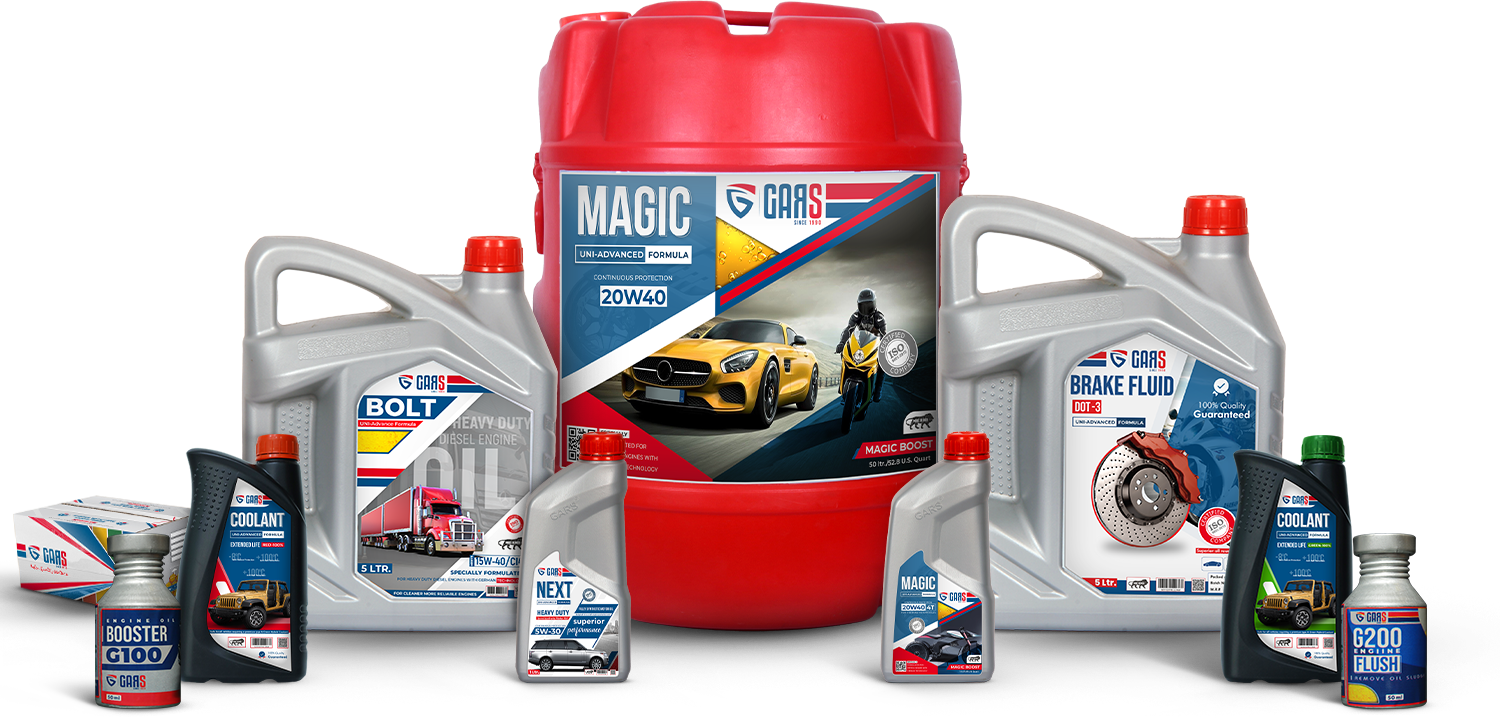What Are Automotive Lubricants?
Automotive lubricants are specially formulated fluids designed to reduce friction, wear, and heat between the moving parts of a vehicle. These high-performance substances play a critical role in ensuring smooth engine operation, prolonging component life, and enhancing fuel efficiency. They are essential in engine systems, transmissions, brakes, axles, and more.
Modern lubricants go far beyond simple oils — they’re engineered with base oils and advanced additive packages to provide additional protection against oxidation, corrosion, sludge, and wear.
Types of Automotive Lubricants and Their Applications
1. Engine Oils
Engine oils are perhaps the most vital automotive lubricant. They’re responsible for:
-
Reducing internal engine friction
-
Cooling engine components
-
Protecting against sludge and deposits
-
Preventing rust and corrosion
There are three primary types:
-
Mineral Oil: Derived from refined crude oil, suitable for older engines and budget-conscious users.
-
Synthetic Oil: Offers superior performance, thermal stability, and longevity. Ideal for high-performance and modern engines.
-
Semi-Synthetic Oil: A blend of mineral and synthetic oils, providing a balance of affordability and enhanced protection.
2. Transmission Fluids
Used in both manual and automatic transmissions, transmission fluids serve the following functions:
-
Lubricate gears and bearings
-
Act as a hydraulic fluid
-
Cool the transmission system
-
Prevent corrosion and oxidation
Automatic transmissions require ATF (Automatic Transmission Fluid), while manuals may use gear oil or manufacturer-specific lubricants.
3. Gear Oils
Gear oils are high-viscosity lubricants used in differentials, transfer cases, and manual transmissions. These oils contain extreme pressure (EP) additives to withstand high stress and shear conditions in gear systems.
Typical grades include SAE 75W-90, 80W-90, and 85W-140, and must be chosen according to OEM specifications. Automotive oil suppliers play a crucial role in delivering high-quality lubricants to service centers and vehicle manufacturers worldwide.
4. Brake Fluids
Though not a traditional lubricant, brake fluid plays a vital role in the hydraulic braking system. It must maintain a stable viscosity across temperature ranges and resist moisture absorption to avoid vapor lock.
Common types include:
-
DOT 3 and DOT 4: Glycol-based fluids suitable for most passenger vehicles.
-
DOT 5: Silicone-based and non-hygroscopic; incompatible with glycol-based fluids.
5. Greases
Automotive greases are semi-solid lubricants used in bearings, chassis points, CV joints, and other components. These greases combine base oils, thickeners (like lithium or calcium), and additives to provide lasting protection under high pressure and temperature.
Key characteristics include:
-
High load-carrying capacity
-
Water resistance
-
Mechanical stability
Functions and Benefits of Automotive Lubricants
1. Reducing Friction and Wear
Automotive lubricants create a protective film between moving parts, reducing direct contact and minimizing wear. This helps extend the life of components such as pistons, gears, and valves.
2. Temperature Control
By absorbing and transferring heat away from friction-prone areas, lubricants help prevent overheating and maintain optimal operating temperatures.
3. Cleaning Engine Components
Detergents and dispersants in lubricants remove contaminants like soot and sludge, keeping the engine clean and preventing blockages in oil passages.
4. Corrosion and Rust Prevention
Additives in lubricants form a barrier on metal surfaces, protecting them from moisture and corrosive byproducts of combustion.
5. Sealing Capabilities
In engines, oil also helps seal gaps between piston rings and cylinder walls, ensuring compression is maintained and performance optimized.
Choosing the Right Automotive Lubricant
1. Refer to Manufacturer Specifications
Always refer to the OEM manual for viscosity grade and performance standards (e.g., API SN, ACEA C3, ILSAC GF-6).
2. Consider Operating Conditions
For extreme climates, synthetic lubricants with excellent cold-start and high-temperature performance are ideal. Heavy-duty applications may require oils with higher viscosity and anti-wear properties.
3. Viscosity Matters
Viscosity, or the oil’s resistance to flow, is denoted by numbers like 5W-30 or 10W-40. The first number (with “W” for winter) indicates low-temperature performance; the second reflects high-temperature stability.
4. Check Compatibility
Not all lubricants mix well. Avoid combining different types unless specified as compatible by the manufacturer.
Top Trends in Automotive Lubricants
1. Environmentally Friendly Formulations
With increasing environmental regulations, bio-based and low-SAPS (sulfated ash, phosphorus, sulfur) lubricants are gaining traction for their reduced environmental footprint.
2. Extended Drain Intervals
Advanced synthetic oils offer longer service intervals, reducing maintenance frequency and lowering total ownership costs.
3. Lubricants for Electric Vehicles (EVs)
EVs demand specialized lubricants for components like gearboxes, bearings, and thermal systems, designed to meet unique electrical and thermal challenges.
4. Intelligent Lubricants and Monitoring
Smart sensors and AI-backed diagnostics are being integrated into modern vehicles to monitor oil health, recommend change intervals, and ensure peak performance.
Proper Lubricant Maintenance Tips
-
Check oil levels regularly and top up when needed.
-
Follow the recommended change intervals to maintain optimal engine health.
-
Use quality filters to keep lubricants clean.
-
Store lubricants in cool, dry environments to prevent degradation.
-
Dispose of used lubricants responsibly according to local regulations.
Conclusion
Choosing the right automotive lubricant and maintaining it properly is key to achieving superior vehicle performance, fuel efficiency, and longevity. From engine oils to brake fluids, each lubricant type plays a vital role in ensuring the reliability and safety of your vehicle. With the emergence of new technologies and environmentally responsible formulations, the future of automotive lubrication continues to evolve for the better. Lubricant oil manufacturers in Ahmedabad are known for producing high-quality oils for automotive, industrial, and agricultural applications.

